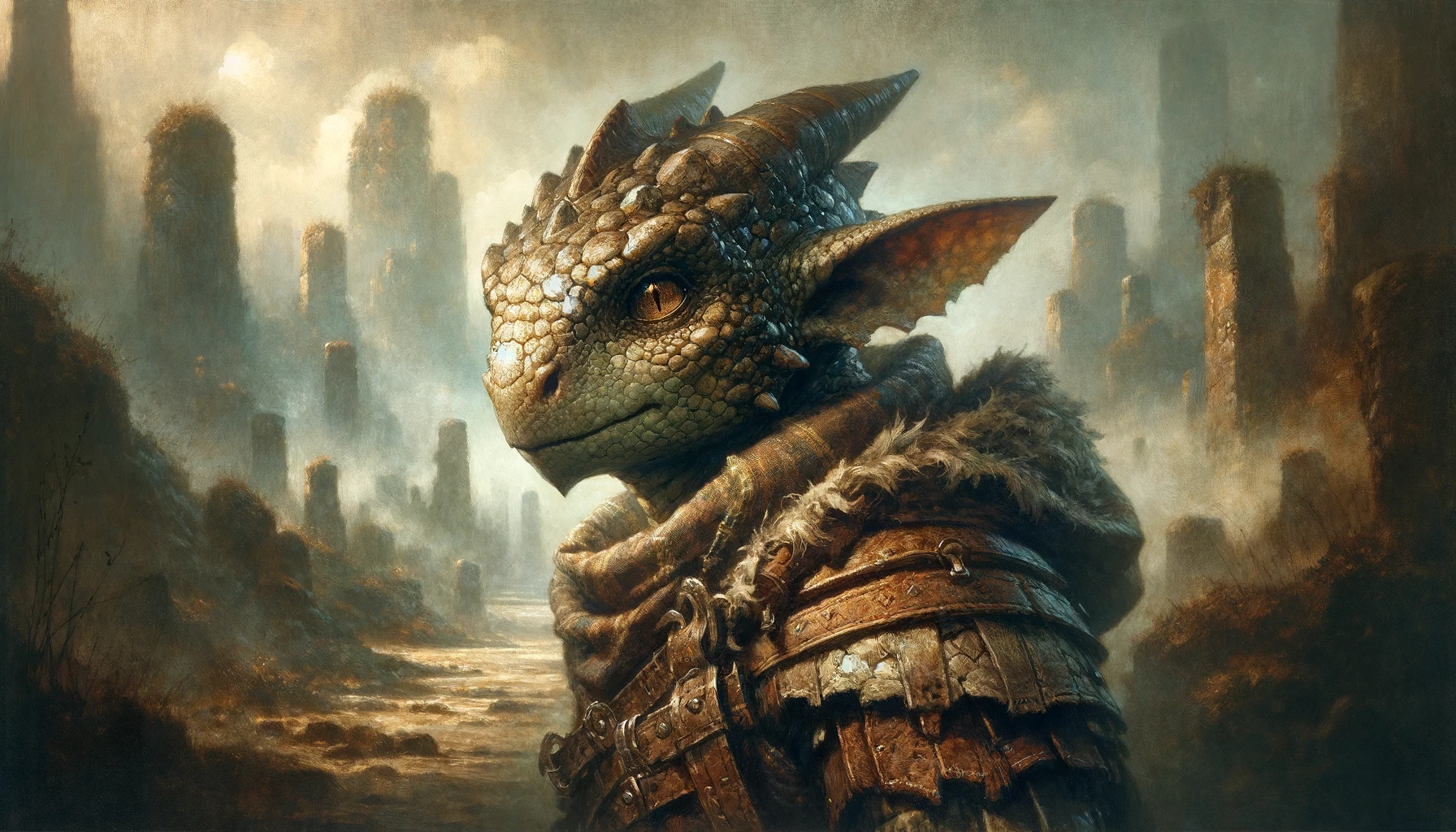Kobolds are small, reptilian creatures known for their cunning, resourcefulness, and pack mentality. With their dragon-like features and a penchant for mining and trap-making, Kobolds carve out their existence in the underbelly of the world, inhabiting vast networks of tunnels and caves. Despite their diminutive size and physical weakness, Kobolds compensate with cleverness, sheer numbers, and an unshakeable loyalty to their clan and the dragons they revere.
Society and Culture
Kobold society is tribal and highly organized, with a strict hierarchy that favors the strong and the cunning. Their communities are centered around the worship of dragons, seeing themselves as the lesser kin of these mighty creatures. Kobolds undertake grand projects to honor their draconic patrons, including the construction of intricate traps, the mining of precious minerals, and the creation of elaborate underground lairs.
Their culture is rich with legends and tales about dragons and their own kind, with storytelling being a crucial part of their communal life. Kobolds believe strongly in the power of the group over the individual, and their loyalty to their clan and leaders is unbreakable.
Relations with Other Races
Kobolds are generally mistrusted or looked down upon by other races due to their sneaky nature and their tendency to lay traps. However, they can form alliances with other races when it benefits them, especially if it serves the interests of their clan or their draconic gods.
Kobold Adventurers
Kobold adventurers are rare but not unheard of, often driven by the desire to prove their worth, gather treasure for their clan, or follow the commands of a dragon. In adventuring parties, Kobolds can be invaluable allies, using their cunning, knowledge of traps and dungeons, and pack tactics to overcome obstacles.
Age
Kobolds mature by the age of 6 and rarely live longer than 120 years, often meeting their end due to the dangers of their environment or the perils of their ambitious undertakings.Alignment
Kobolds tend towards lawful alignments, deeply ingrained with a sense of order within their clan and a natural inclination to follow a strong leader or dragon.
Size
Kobolds are small, standing around 2 to 3 feet tall and weighing about 30 to 35 pounds. Their size is Small.Your size is small.
Speed
Your base walking speed is 25 feet.
Your base swimming speed is 12 feet*.
Your base climbing speed is 12 feet*.
* calculated speed.
Languages
You can speak, read, and write: Common, Draconic.
Ability Score Increase
- Dexterity: +2
- Intelligence: +1
Skill Proficiency
You have 1 of the following skills: Sleight of Hand, Stealth, Survival.
Race Features
Darkvision
Accustomed to the dark tunnels of their homes, you have superior vision in dark and dim conditions, up to 60 feet.
Grovel, Cower, and Beg
You can use your action to cower pathetically to distract nearby foes. Until the end of your next turn, your allies gain advantage on attack rolls against enemies within 10 feet of you that can see you. This feature can be used once per short or long rest.
Pack Tactics
You have advantage on an attack roll against a creature if at least one of your allies is within 5 feet of the creature and the ally isn’t incapacitated, showcasing your innate ability to work together.
Craftiness
You gain proficiency in one of the following skills of your choice: Stealth, Sleight of Hand, or Survival. This reflects your knack for survival and resourcefulness in various situations.
Lore
The Stream
Credits: Game Squires

